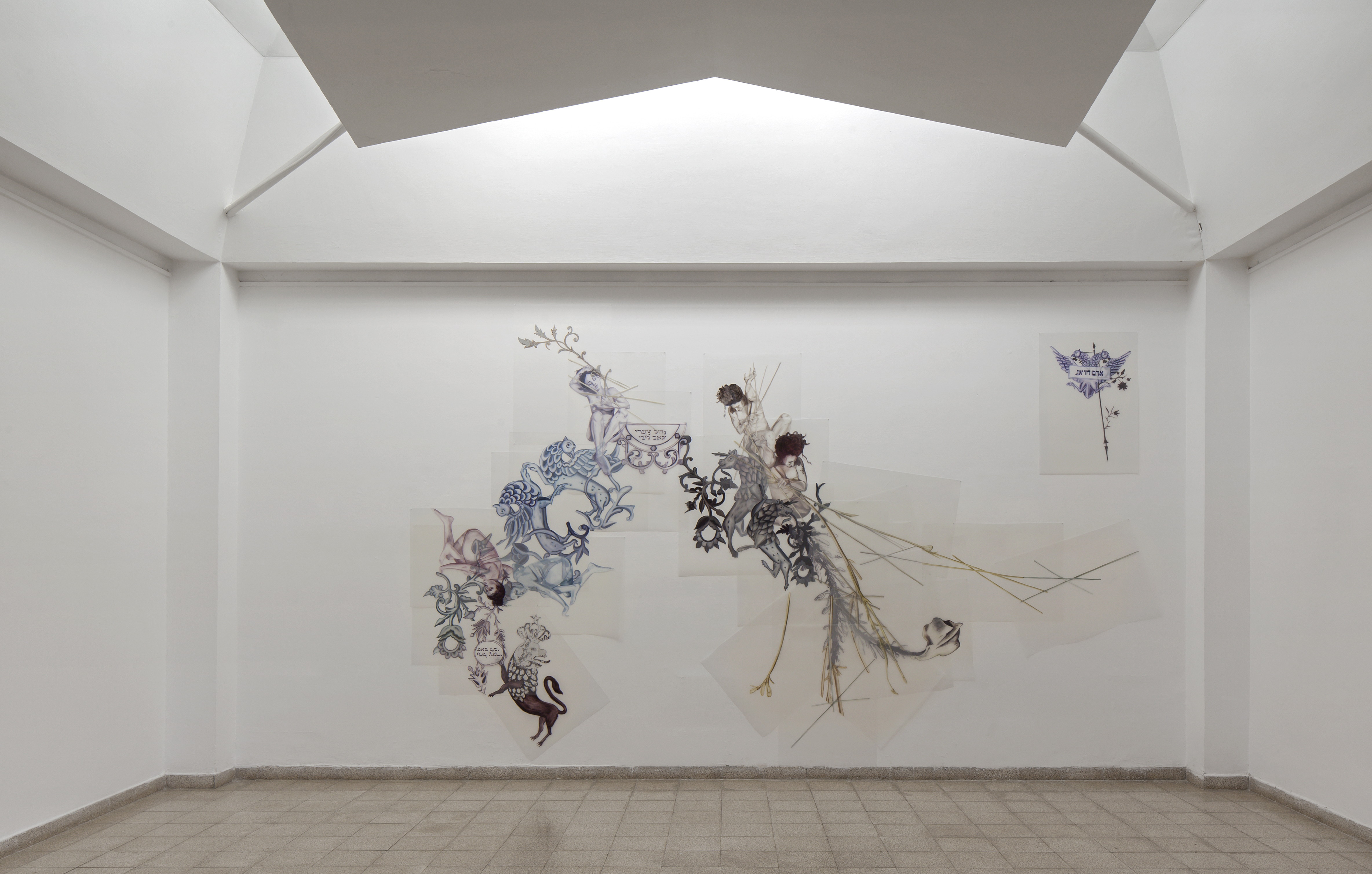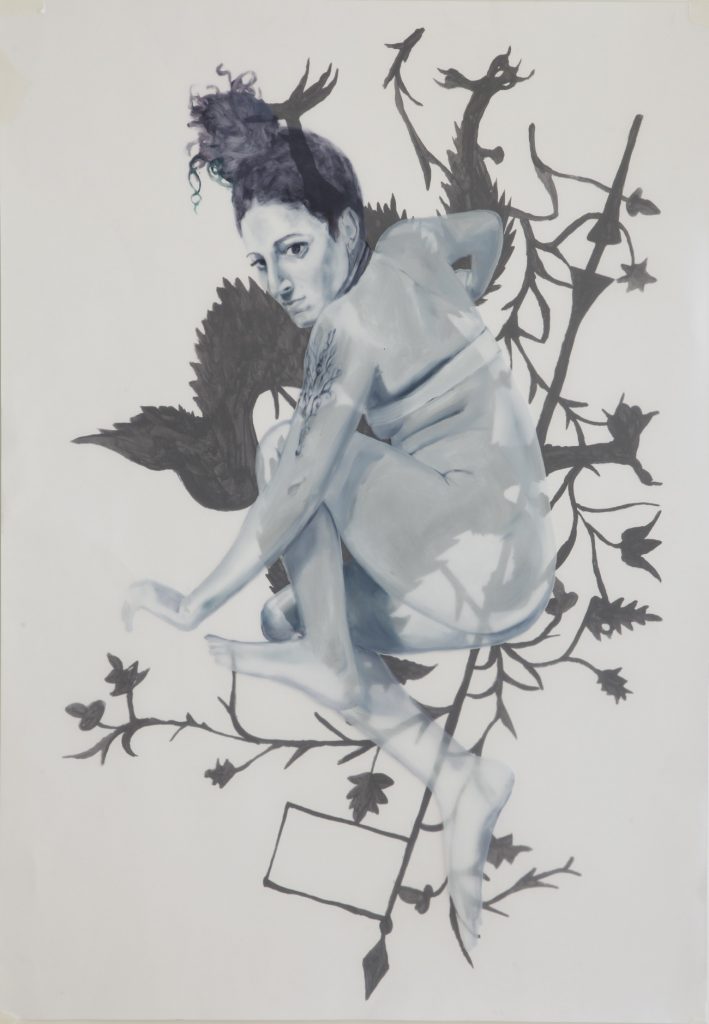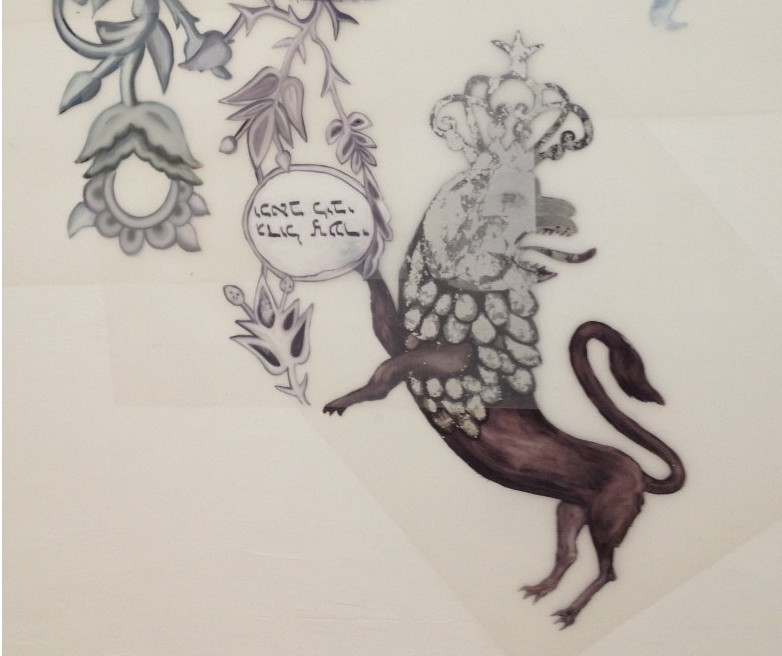“A person worries about losing his money / But he does not worry about losing his days / His money does not help / And his days do not return” (Adam doeg al ovdan damav / ve-eyno doeg al ovdan yamav / damav eynam ozrim / ve-yamav eynam hozrim)
This verse [composed of two rhyming couplets, the first in tetrameter and the second in trimeter (Tr.)] can be found inscribed or painted on old “Shiviti” and “Mizrach” paper-cuts that were hung on the eastern wall in synagogues and homes. In a dialogue that Ayelet Carmi conducts with one of these paper-cuts that forms part of the Ein Harod Museum’s collection of Judaica, her attention is on an error that appears in it.
Instead of “eyno doeg al ovdan yamav” (“he does not worry about losing his days”), the man who made the paper-cut wrote “ani doeg al ovdan yamav” (“I worry about losing his days”). Something personal: perhaps he really did worry. Men ornament [paper-cuts] and worry about money that doesn’t return. Using cutting knives, they created marvelous animals and plants, a heraldic structure, the right and left side facing and reflecting one another, while Ayelet Carmi turns it topsy-turvy to create a new order.


